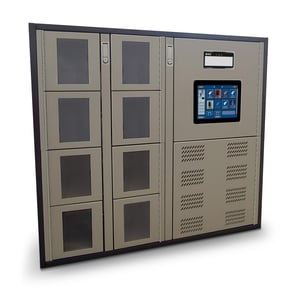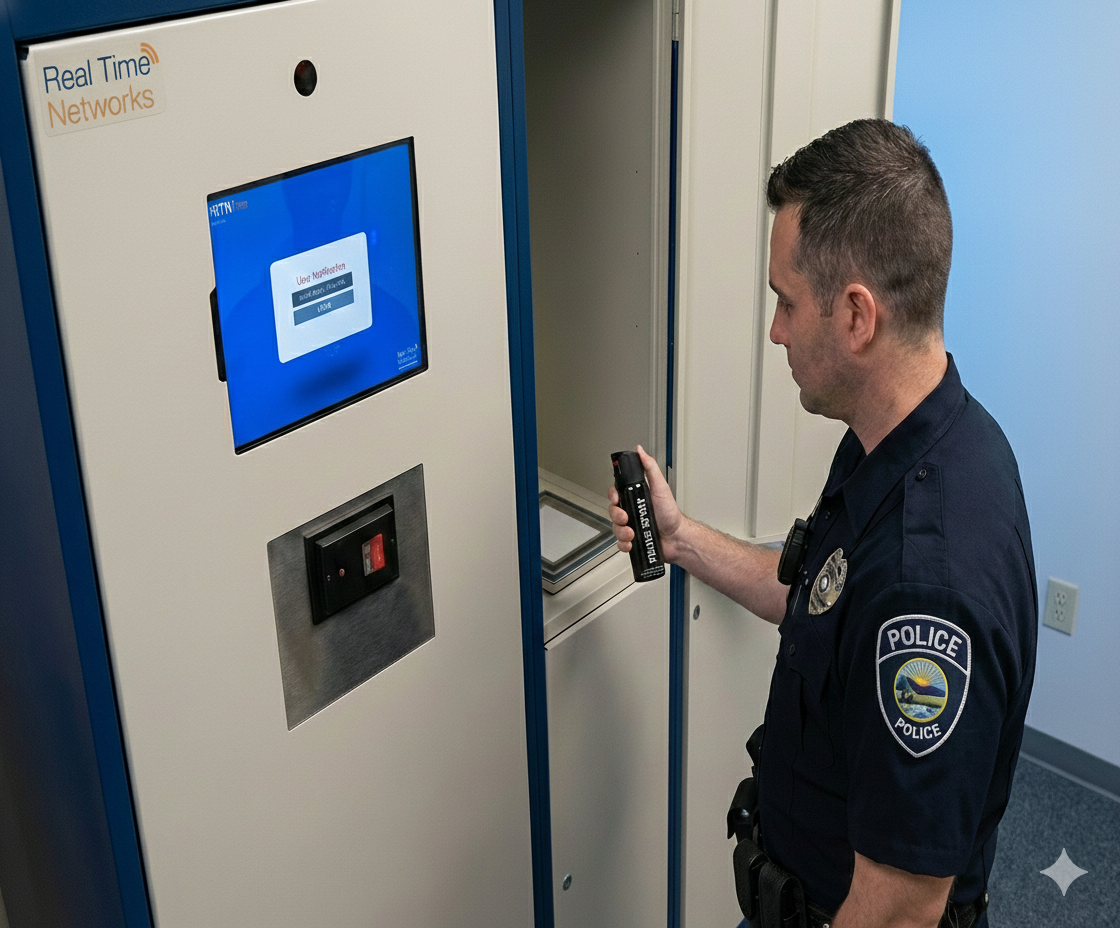By Jay Palter | October 29, 2019
The opioid crisis continues to worsen across North America. And as it does, hospitals and EMS agencies continue to struggle with drug diversion.
Motivated addicts are finding new ways to remove narcotics from agency supplies by circumventing old paper-based inventory management procedures. And now, just this year, the DEA has decided to step up its enforcement of the anti-diversion laws that many agencies are still struggling to understand. So beyond the immediate risk of expanding opioid addiction and overdoses, now EMS agencies face the growing risk of regulatory violations.
 So, it’s been no surprise that we’ve heard from a lot of EMS agencies struggling to find more reliable solutions for controlling their drug inventories. It’s a complex problem. There’s still lots of brainstorming and debate going on about what the best approaches are to fight drug diversion. So we wanted to dig into the problem and then share some ideas for how EMS agencies can best leverage a smart locker system for medication inventory management.
So, it’s been no surprise that we’ve heard from a lot of EMS agencies struggling to find more reliable solutions for controlling their drug inventories. It’s a complex problem. There’s still lots of brainstorming and debate going on about what the best approaches are to fight drug diversion. So we wanted to dig into the problem and then share some ideas for how EMS agencies can best leverage a smart locker system for medication inventory management.
A Growing Crisis
Drug diversion is the removal for illicit use of controlled substances from their intended medical or law enforcement workflows. That’s a general definition, because part of the problem with managing drug diversion is that the actual legal definition varies by jurisdiction.
By and large most drug diversion is carried out by hospital, EMS, and law enforcement staff supporting their own addictions. And unfortunately there are many of them. The International Health Facility Diversion Association has extrapolated from available reporting data to estimate that there are as many as 37,000 drug diverters working in US healthcare facilities nationwide. And according to the US Department of Justice and DEA over 40% of the 42,000 opioid overdose deaths in the US in 2017 involved prescription opioids.
On top that, new research from the DEA shows a concerning trend where more and more diversion occurs so those narcotics can be resold at the street level, for Medicare fraud, and even as part of evolving organized crime operations. The street value of prescription opioids has gotten that high.
Limited Government Help
Until recently the DEA had taken a frustratingly hands-off approach to drug diversion, mostly leaving it up to individual jurisdictions to combat on their own. That changed when two pieces of legislation passed the US Congress: Protecting Patient Access to Emergency Medications Act of 2017 (PPAEMA) and the Controlled Substances Act (CSA).
That initially looked like a promising step forward, but due to confusing language in those bills, specifically stating that controlled substances needed to be administered in “the physical presence of the agency’s medical director,” many EMS agencies were confused how to proceed. Is a medical director supposed to show up on scene every time a patient needs fentanyl? Do EMTs not administer ketamine to a patient writhing in pain until they arrive at the ER? The language in the legislation didn’t connect with the reality that EMS agencies faced. So many US states threw up their hands, enacted their own more practical legislation, and hoped the DEA would stay out of their way.
But under the PPAEMA EMS agencies are liable for “ensuring the appropriate use, security, and reporting of controlled substances.” And so the DEA and Department of Justice have stepped up their enforcement actions from 54 in 2017 to 283 in 2018.
EMT Agencies Need to Find Their Own Solutions
So it’s fair to say that not only are EMS agencies in desperate need of solutions, they’re mostly on their own to find them. Currently EMS advisory groups are recommending a three-pronged approach to mitigate drug diversion:
- Adjust drug formulations
- Deploy secure storage
- Run a monitoring program
To address the first item agencies have tried a few different things. Some have chosen to adjust the quantities of certain drugs that they’ll keep in inventory, others purchase lower concentration doses or purchase drugs with tamper-resistant packaging. Other agencies are simply choosing to eliminate as much fentanyl as possible in favor of other pain killers.
For the second, using secure storage is often the easiest of the three approaches to implement by combining access controlled lock boxes with tamper proof packaging.
That leaves monitoring medications, which is usually the most challenging approach to implement. Many agencies recognize that using paper forms for tracking is slow, error-prone, and easy to abuse. So one option some agencies are considering is a smart storage and kit check system that can handle both drug monitoring and secure storage.
Best Practices for Using Smart Locker Systems to Mitigate Drug Diversion
There’s a lot of value to be gained using a smart storage system for managing drug inventories. That is, as long as they’re deployed effectively. By design these systems are very flexible in how they can be set up. Some options are going to be much better than others when your goal is managing drug diversions. Here are some pointers for EMS agencies:
Choose the Correct Authentication Method
Smart storage systems can be configured to use different authentication options, including PIN codes, swipe cards, or biometric scanning, such as fingerprint or iris scanning. Not all of those are good choices for EMS agencies. PIN codes can be copied. Swipe cards can be stolen or ‘borrowed’ under false pretenses by staff determined to steal narcotics. So in most cases EMS agencies will want to use a biometric option as they offer the lowest risk of allowing fraudulent transactions.
Track Everything That Matters
 Many new smart locker systems come equipped with asset verification technology. This is a wireless system that uses active RFID to identify and track items—like medication vials—in real time right inside kit bags as they’re placed in storage. This technology can also track expensive biomedical equipment that might be at risk for theft, like defibrillators or medication pumps.
Many new smart locker systems come equipped with asset verification technology. This is a wireless system that uses active RFID to identify and track items—like medication vials—in real time right inside kit bags as they’re placed in storage. This technology can also track expensive biomedical equipment that might be at risk for theft, like defibrillators or medication pumps.
With asset verification a medical director might see in their report that an EMT accessed the storage system at the end of their shift and reported all medications accounted. And also see that actually a bottle of fentanyl is missing. No fingers could be pointed at later shift EMTs for missing medication.
Don’t Overlook the Secondary Benefits
One of the most important benefits of rolling out a smart storage system is that it supports other EMS workflows beyond managing drug diversion. Since a system’s smart access panel is customizable your agency can build in checklists that EMTs need to complete at kit bag sign out or return. Have they confirmed the quantities of all controlled substances? Are any low or expiring, and need restocking?
Smart lockers can also integrate with key and fleet management systems to generate performance data on how your ambulances are operating. Did the EMTs complete a full ambulance inspection? Were there any maintenance warnings? Other vehicle servicing needed?
All of this information is captured in a central management system that can generate reports and send alerts to support staff and medical directors. This streamlines performance across your entire agency.
Want to Learn More?
Drug diversion is a complex problem. There’s no single solution that will work in every jurisdiction. But speaking with EMS agencies it’s clear that enhanced electronic smart storage solutions have a lot to offer them in the fight.
Subscribe to our blog

Jay Palter
Vice President of Marketing & Partnerships





